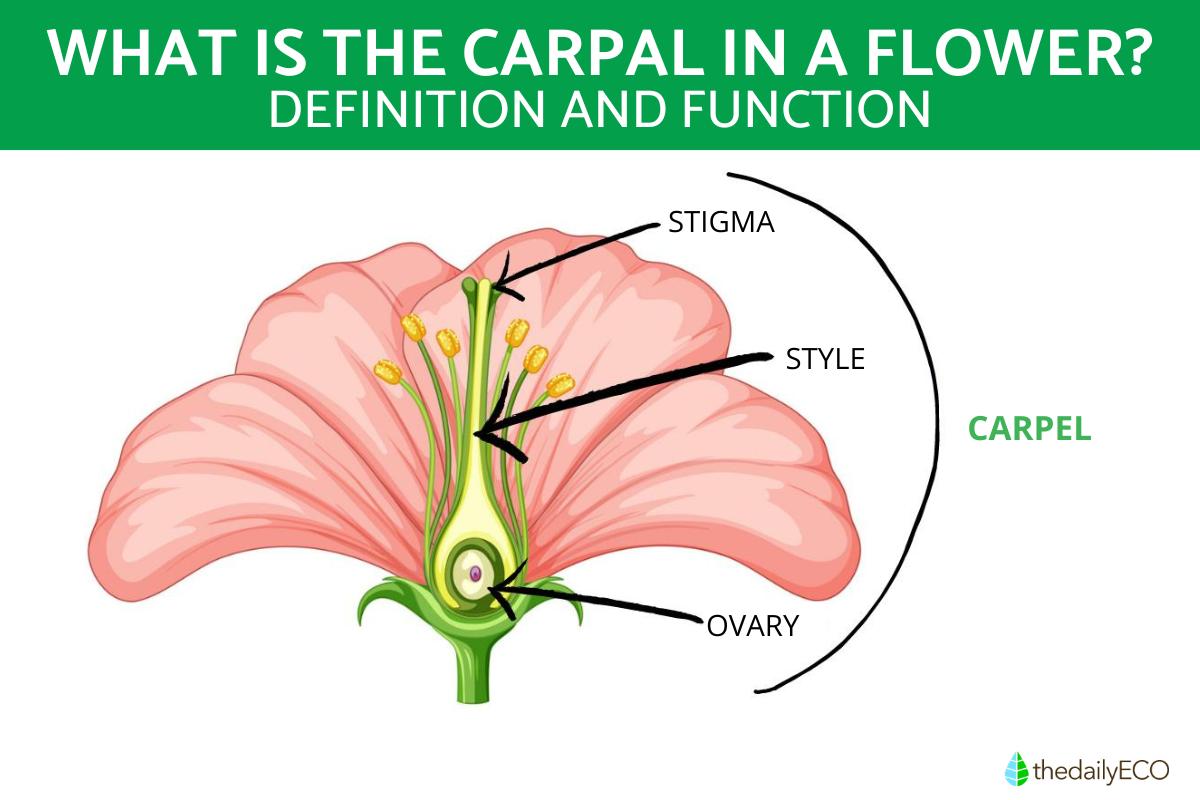What Do the Carpals Do in a Flower?


Flowers dazzle us with their vibrant colors and sweet scents, but behind this beauty lies a complex reproductive system. At the heart of this system are carpels, the often-overlooked female reproductive organs of flowering plants. These modified leaves play a critical role in ensuring plant survival and continuation.
This article by thedailyECO delves into what carpels are, uncovering their key parts and functions. We'll explore how they produce, protect, and disperse seeds, ultimately revealing how carpels contribute to the vibrant tapestry of flowering plants.
What are carpels in a flower?
Carpels are the essential female reproductive organs within a flower, forming the core structure called the pistil (or gynoecium). These modified leaves play a critical role in plant reproduction.
They enclose the ovary, safeguarding the developing seeds within a secure chamber. The ovary itself houses the ovules, which mature into seeds after fertilization. Interestingly, depending on the plant species, carpels can facilitate seed dispersal in various ways after fertilization.
There is a key difference between flowering plants (angiosperms) and cone-bearing plants (gymnosperms) in carpel structure. Angiosperms typically have fused carpels, creating a closed chamber around the ovary for enhanced protection of the developing seeds. In contrast, gymnosperms have separate and open carpels, leaving the ovules exposed.
Where is the carpel located?
The carpel is located on a widened structure called the receptacle, carpels work alongside other floral parts like the sepals (calyx) and petals (corolla). This receptacle forms the base of the flower and attaches it to the stem through a stalk called the peduncle or thalamus.
Parts of the carpels
Carpels are composed of three key parts:
- Ovary: this is the fertile chamber of the carpel, where ovules (potential seeds) are produced. It can be single or formed by the fusion of multiple carpels. The ovules are attached to an internal structure called the placenta.
- Style: this is a tube-like structure that connects the ovary to the stigma. While typically present, the style can be absent in some flowers.
- Stigma: located at the tip of the carpel, the stigma acts as the landing pad for pollen grains. It often has a sticky or feathery surface to aid in pollen capture. The structure of the stigma can vary depending on the plant species.
.

Types of carpels
The number of carpels within a flower varies greatly, acting as a kind of floral fingerprint. Here's a breakdown of common classifications:
- Unicarpellary: a single carpel forms the pistil (e.g., pea flower).
- Bicarpellary: two carpels are present (e.g., buttercup).
- Tricarpellary: three carpels make up the pistil (e.g., lily).
- Tetracarpellary: four carpels are fused (e.g., arabis flower).
- Pluricarpellary: more than four carpels contribute to the pistil (e.g., rose).
These terms apply to both carpel number and the resulting gynoecium type.
Furthermore, carpels can exist as independent structures (separate) or combine to form a single pistil (fused). This distinction leads to two main gynoecium types:
- Apocarpic gynoecium: individual carpels remain separate within the flower (e.g., buttercup).
- Syncarpic gynoecium: carpels are fused together, creating a single pistil (e.g., lily).
Understanding carpel number and fusion helps us appreciate the diversity and complexity within the floral world.
Function of the carpels
As mentioned before, carpels play a critical role in plant reproduction. Composed of one or more carpels, the gynoecium produces and protects ovules, which mature into seeds for new plants. Carpels also contribute to seed dispersal, ensuring these seeds reach suitable environments for growth.
Each part of the carpel serves a specific function:
- Ovary: this chamber houses ovules and later develops into a fruit, safeguarding seeds for reproduction. The ovary may also modify itself after fertilization to aid in seed dispersal, attracting pollinators or facilitating attachment to environmental factors.
- Style: this tube-like structure acts as a bridge, connecting the ovary to the stigma and facilitating pollen transfer.
- Stigma: located at the tip of the carpel, the stigma serves as the landing pad for pollen grains. It may have a sticky surface, hairs, or other adaptations to capture pollen effectively.
By understanding the structure and function of carpels, we gain a deeper appreciation for the intricate mechanisms that ensure the continuation of flowering plants.
If you want to read similar articles to What Do the Carpals Do in a Flower?, we recommend you visit our Biology category.






